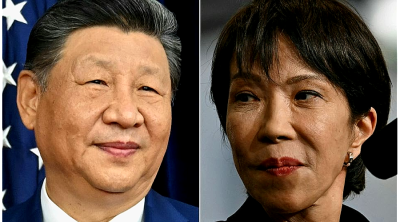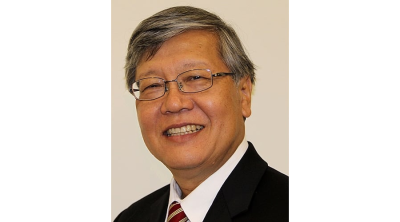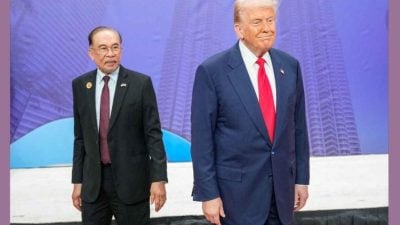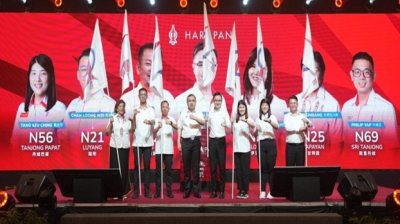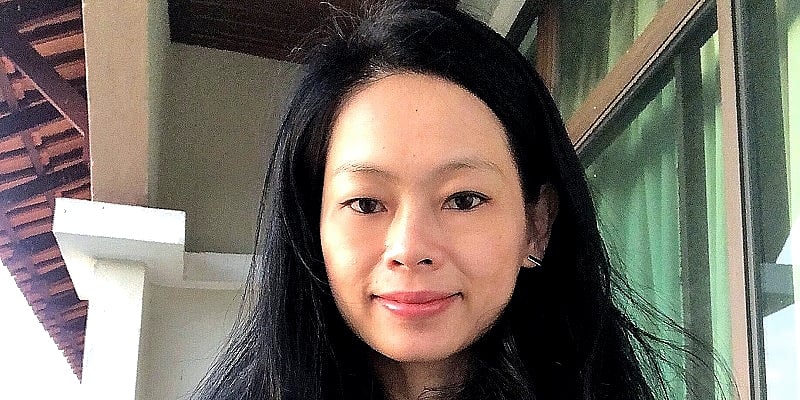
As the global economic landscape enters a new phase of volatility, Chinese President Xi Jinping’s state visits to Malaysia, Cambodia and Vietnam next week carry a sense of urgency.
At a time when the global economy grapples with rising uncertainty, his arrival in Southeast Asia holds significance that extends far beyond formal diplomacy and photo opportunities.
These visits occur immediately after US President Donald Trump’s sweeping announcement of new global tariffs, which have sent ripples—if not full-on shockwaves—through global trade and financial markets.
The backdrop is not merely a bilateral trade dispute between the world’s two largest economies; it represents a rapidly unfolding global confrontation that threatens to draw Southeast Asia into a deeper geopolitical and economic vortex.
Vietnam and Cambodia, both hit with some of the highest US tariffs—46 percent and 49 percent, respectively—are under growing pressure to reassess their economic dependencies and diplomatic alignments.
Malaysia, too, faces a 24 percent tariff on key exports like palm oil and electronics, prompting urgent internal reviews of its trade policy.
Xi’s tour is widely seen as a counteroffensive to US economic aggression, positioning China as a more stable and willing economic partner in a moment of global uncertainty.
While the US later announced a 90-day pause on tariff enforcement, the damage has already been done in terms of regional perception.
The pause may offer temporary relief, but it also reinforces the view that Washington is deploying tariffs as a tool of coercive diplomacy aimed at pressuring countries to disengage from economic alignment with China.
Xi’s trip is expected to be heavy on symbolism and strategic dialogue.
Under Prime Minister Anwar Ibrahim, Malaysia has sought to maintain a balanced foreign policy—an act that is becoming increasingly delicate in a region caught between two competing superpowers.
Cambodia, on the other hand, has emerged as one of Beijing’s closest allies in the region, making it fertile ground for reinforcing China’s narrative of South-South solidarity and economic partnership.
But these are not ordinary diplomatic tours. They are, in essence, Xi’s response to Washington’s provocation.
As Trump ratchets up protectionist measures to protect American industries, Xi is pivoting to Southeast Asia to reassure allies and actively shape the next phase of Asia’s economic architecture.
The underlying message is clear: China remains open for business, and its embrace of Southeast Asia is firm and strategic.
Tariffs and tremors: Trump’s economic shockwave hits home
On April 2, President Trump announced a sweeping new tariff policy, introducing a baseline 10 percent tariff on a wide range of imports, with significantly higher country-specific rates targeting nations with large trade surpluses with the US.
China, unsurprisingly, was targeted most aggressively, with cumulative tariffs reaching a staggering 104 percent. In retaliation, Beijing raised tariffs on US goods from 34 percent to 84 percent, effective April 10, unleashing one of the most tit-for-tat episodes of economic confrontation in recent history.
The fallout was immediate and global. Stock markets plunged across Asia, with the Nikkei and Hang Seng falling by over 4 percent in a single day.
Still recovering from pandemic disruptions, global supply chains are at risk of another rupture.
This volatility is particularly damaging for Southeast Asia, which is heavily dependent on Chinese investment and US trade.
Malaysia is already feeling the pinch. The Malaysian government has revised its 2025 growth forecast and announced it would send a delegation to Washington to attempt damage control.
Bank Negara Malaysia, the central bank, acknowledged the impact but emphasized the country’s diversified economy as a buffer.
Nevertheless, investors remain jittery, and local businesses fear further retaliatory measures if Malaysia is perceived as leaning too far in either direction.
Cambodia, meanwhile, could draw future scrutiny for its geopolitical entanglements with China—particularly military cooperation and infrastructure investment.
The China-funded expansion of the Ream Naval Base, long a sore point for the US, is now complete. With this development likely to feature prominently during Xi’s visit, Cambodia is making a clear bet on its alignment with Beijing.
Even with the US Treasury’s announcement of a 90-day pause on the enforcement of the tariffs—framed as a time for reassessment and consultations—it seems more like a tactical delay than a substantive policy shift.
Trump’s strategy reflects patterns that international relations scholars describe as “economic statecraft” or even “coercive diplomacy”—utilizing trade policy not just as an economic lever but as a geopolitical tool.
This type of strategic decoupling aims to lessen economic interdependence with China by encouraging third-party states to make binary choices about their affiliations.
Xi’s tour may well be remembered not just as a visit of handshakes and declarations but as the week when Southeast Asia’s balancing act was tested—under pressure, under scrutiny, and under history’s watchful eye.
Xi’s grand strategy: From infrastructure to influence
Xi Jinping’s foreign policy toward Southeast Asia has always been about more than infrastructure projects and trade volumes.
At its core is a vision of a multipolar world, where regional partnerships act as bulwarks against Western economic coercion.
Southeast Asia’s proximity, strategic waterways, and young, dynamic economies are central to this vision.
Xi’s 2025 tour is a continuation of this geopolitical courtship, but under more urgent and assertive circumstances.
In Malaysia, we can expect Xi to revisit projects under the Belt and Road Initiative, many of which were revised or postponed under previous administrations.
Anwar Ibrahim, known for his pragmatism, is likely to strike a careful balance—seeking economic cooperation while also keeping options open with the West.
Xi will likely offer greater Chinese investment in sectors such as green technology, digital infrastructure, and even higher education—areas where Malaysia seeks international collaboration.
There is also growing speculation about new agreements in fintech and renewable energy, framed as part of China’s push toward a “high-quality BRI”.
But beneath the economic overtures lies a more strategic motive. Xi’s engagements in Kuala Lumpur will be closely watched for indications of how Malaysia plans to position itself as it assumes the ASEAN Chairmanship in 2025.
Beijing would like nothing more than a cooperative ASEAN, or at least a neutral one, as it navigates mounting international scrutiny over its behavior in the South China Sea and its broader strategic intentions.
Cambodia presents a different context in which China’s influence is already deeply embedded.
With the Ream Naval Base now effectively under dual-use functionality, Xi’s visit is expected to formalize new defense and economic agreements that further cement Cambodia’s status as China’s most loyal regional partner.
Western observers will no doubt raise alarms, but Phnom Penh has already clarified which way its strategic compass points.
Between a rock and a rising dragon
The dilemma for Southeast Asian states is not simply picking sides but navigating a turbulent and often contradictory international landscape.
The return of Trump-era tariffs signals a US foreign policy that is transactional, inward-looking, and increasingly antagonistic toward multilateralism.
Conversely, China offers the promise of economic stability and infrastructure funding, but with strings attached—primarily political alignment and strategic acquiescence.
Many Southeast Asian countries are pursuing what analysts call “strategic hedging”—strengthening economic ties with both superpowers while avoiding deep entanglements. But the space for such hedging is shrinking.
The more aggressive the US becomes with punitive trade measures, the more attractive China’s economic handouts may seem.
Conversely, the more militarized China’s regional presence becomes, the more nervous smaller countries grow, prompting some to lean back toward US security guarantees.
For Malaysia, the challenge is acute. As a mid-sized economy with significant exposure to global markets, it cannot afford to alienate either power. However, it also cannot simply remain neutral.
Prime Minister Anwar Ibrahim, recognized for his reformist credentials and globalist rhetoric, has so far avoided the binary framing that Washington and Beijing might prefer. His upcoming meeting with Xi will be closely scrutinized not only for trade deals, but also for indications of deeper political alignment.
A defining week for Southeast Asia’s future
Xi Jinping’s visit to Southeast Asia this April is no mere diplomatic formality. It represents a carefully choreographed counter-move in a larger economic and strategic chess game.
For Beijing, it presents an opportunity to deepen its ties in a region vital to its global ambitions. For Southeast Asia, it marks a moment of reckoning— a chance to assert regional priorities amidst intensifying great power rivalry.
As the US pursues protectionist policies that reverberate across the globe, and China steps in to offer partnership—albeit on its terms—the region is forced to reimagine its path forward.
The discussions and choices to be made next week in Kuala Lumpur, Phnom Penh and Hanoi may not fully determine Southeast Asia’s future, but they will undoubtedly shape its direction.
Xi’s tour may well be remembered not just as a visit of handshakes and declarations but as the week when Southeast Asia’s balancing act was tested—under pressure, under scrutiny, and under history’s watchful eye.
(Khoo Ying Hooi, PhD, is an Associate Professor of International Relations and Human Rights at Universiti Malaya. Her work spans human rights research, diplomacy, and policy engagement across ASEAN and Timor-Leste, along with active contributions in editorial and advisory capacities.)
ADVERTISEMENT
ADVERTISEMENT







